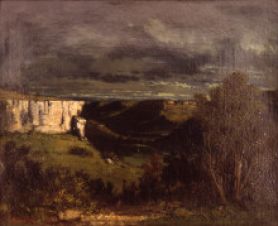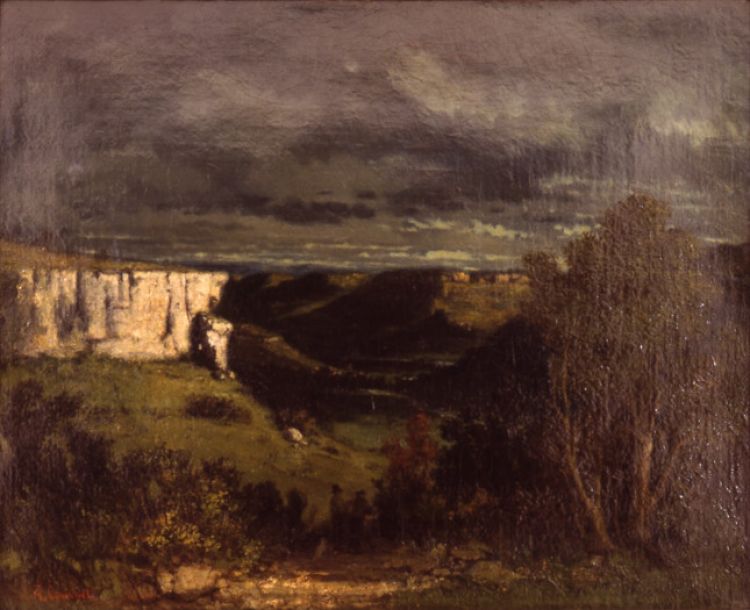The Valley of the Loue in Stormy Weather

This a work is by Gustave Courbet, a painter considered as emblematic of "realism" in painting. Not that the precise depiction of nature had not existed before this artist, but it was he who turned into a manifesto. Courbet's painting is the ultimate rejection of the neoclassical aesthetic. Originally painting in a Romantic vein and acquainted with Corot and Baudelaire, he proceeded to acquire notoriety through a series of scandals. He soon advocated "artistic socialism" and defended "pictorial naturalism", painting what one sees, emphasizing the role of ordinary people and dignifying everyday life.
Courbet is essentially famous for his "manifesto" paintings and the figures inhabiting them, but it was in landscape that he expressed greatest sensitivity.
Observe this panorama of the Loue Valley. Appreciate the way in which our gaze is drawn towards the background of the scene and how this device gives an impression of depth, of being led into the heart of the painting. The horizontal bar dividing the composition helps to create a powerful construction using large masses and strong contrasts. The figures in the foreground are doubtless hunters.
Throughout his life, Courbet passionately painted his native region. He was also interested in the sites he came upon in the course of his travels. In these landscapes, more than than in any of his other paintings, realism becomes poetry.
